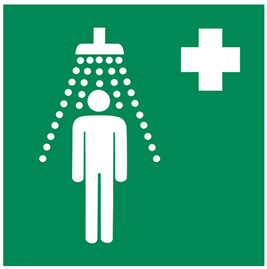Hazards
As part of the University's efforts to increase awareness of safety initiatives, EHLS applies signs to the entryway to laboratories indicating the minimum personal protective equipment (PPE) for entry, the hazards present in the laboratory, information of special restrictions for the laboratory, as well as the presence of certain safety equipment. Each sign also includes a matrix bar code, commonly referred to as a "QR code" linking the observer to this website for an explanation of the different graphical indicators used on the signs.
Personal Protective Equipment
Minimum PPE requirements for laboratories include clothing that covers the legs and feet such as long pants or skirts in conjunction with closed-toe shoes. A lab coat, smock, apron, or other additional clothing is required in most laboratories in order to cover the arms and body and will be specific to the hazards of the laboratory. Eye protection in the form of safety glasses or goggles will also be required for entry based on the hazards of the lab. Gloves will be required for entry when handling of hazardous substances may be incidentally required to enter, move throughout, or exit the laboratory and at all times when handling hazardous substances.
Lab coat
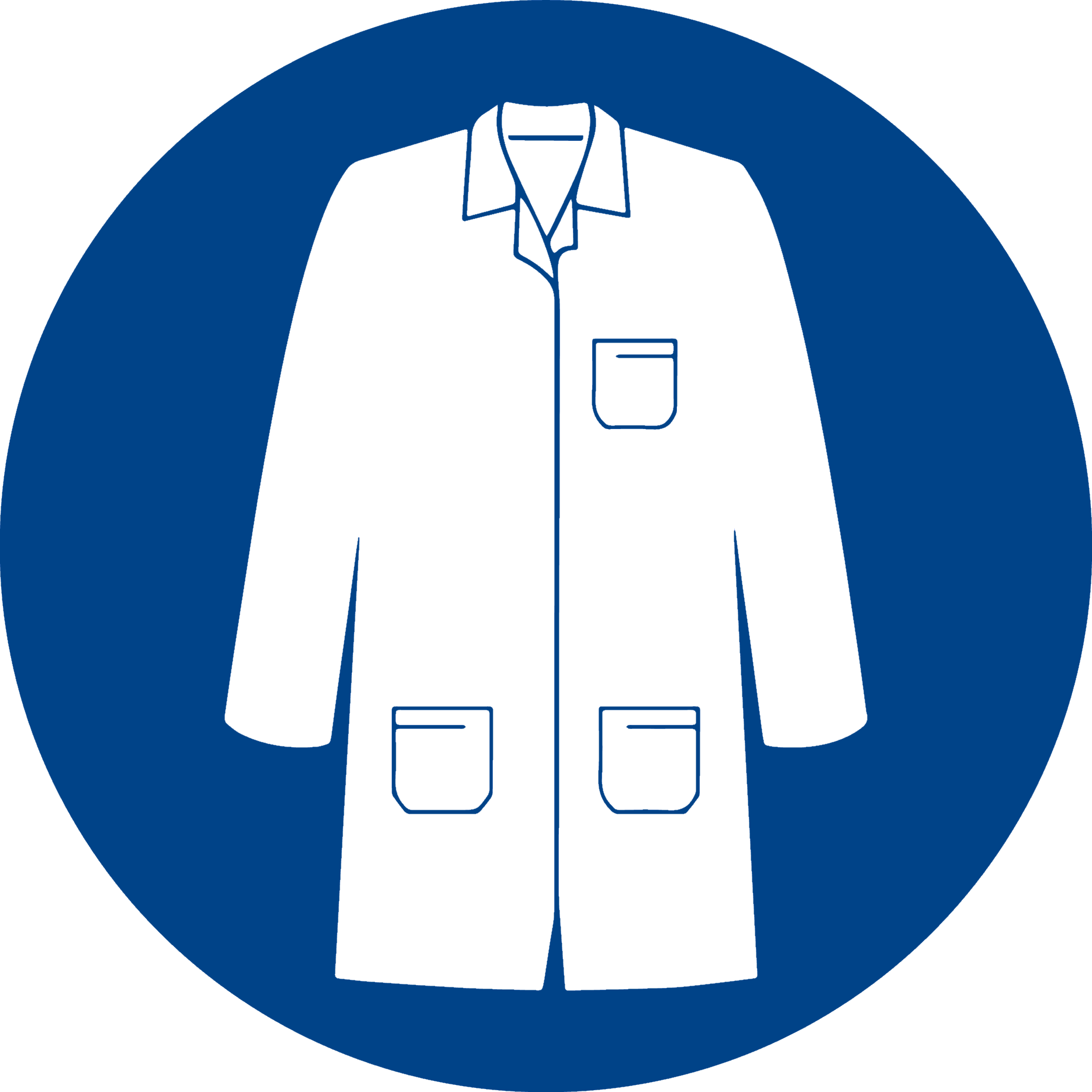
Lab coats provide upper-body protection from certain hazards and are typically designed with specific hazards in mind such as liquid corrosives or flash fires. A lab coat suited for the hazards of the laboratory and operations currently in progess in the laboratory must be worn.
Apron
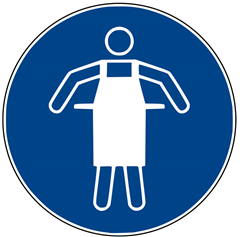
Aprons generally guard against splashes of liquid and contact between this liquid and the skin. They can include sleeves and various closures. The material and construction of aprons depend on the hazards they are designed to guard against.
Safety glasses

Safety glasses are typically designed to protect against impact of objects at high velocity and provide limited (if any) protection against splashes and debris.
Safety goggles

Safety goggles are typically designed to protect against splashes and spills of chemicals, and their design may incorporate varying degrees of protection and ventillation as well as shapes to conform to a worker's facial shape and features.
Face shield
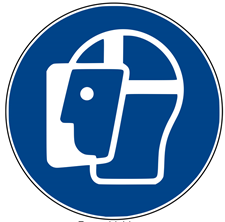
Face shields can be designed to provide protection against projectiles, splashes, or both. They are typically used where no contact between skin, eyes, nose, or mouth are desired and vapor or gaseous exposure are not of concern.
Gloves
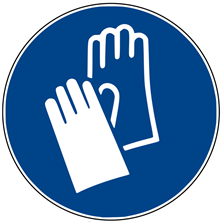
Gloves come in varying lengths, thicknesses, and materials and with various features to enhance dexterity, grip, and other attributes. They should be selected in order to provide protection against the hazardous substances that a worker may be exposed to. It is common for a single laboratory to warrant two or more different types of gloves based on the work being done.
Hardhat

Hardhats are common in areas where work is being performed overhead, or where lifting or movement of equipment or parts could impact workers.
Fall protection
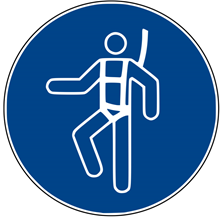
Fall protection equipment may be required in areas where there is an unprotected ledge or drop-off. This could be part of the building, or part of large equipment.
Protective footwear

Protective footwear in addition to the requirement of shoes that cover the entire foot can include steel-toed or composite-toed boots, metatarsal boots, and other forms of foot protection such as protection from bloodborne pathogens.
Welding mask
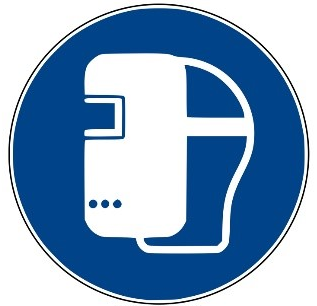
In areas where welding is being conducted, or is routinely practiced it may be required to wear a special mask to provide eye and face protection.
Respirator
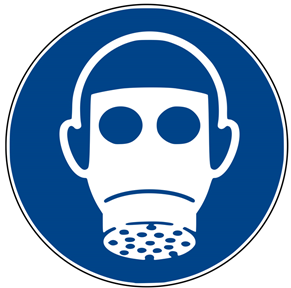
In areas where engineering controls may not be sufficient to control exposure to atmospheric contaminants, respiratory protection may be required. Entry to these areas is limited to employees cleared through the University's respiratory protection program. Specific information on the type of respriatory and accessories such as cartridges must be obtained from the safety contact for the area.
Surgical mask

Surgical masks are not actually personal protective equipment, but are included here because they may be an entry requirement for certain areas. They are in fact designed to protect receptors in the area from your potential contamination and are not designed to protect the wearer except incidentally.
Hazards
Biohazard
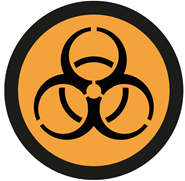
Biohazards can include potentially infectious material, human or animal blood, human or animal bodily fluids, pathogens, and organisms with synthetic recombinant nucleic acids.
Biosafety Level 1
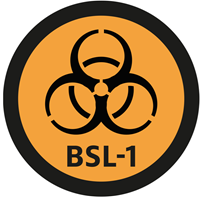
Laboratories with Biosafety Level 1 designation work with microbes that pose little to not threat of infection in healthy adults.
Biosafety Level 2
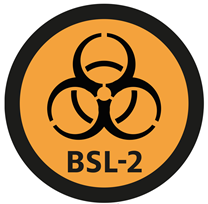
Laboratories with Biosafety Level 2 designation work with agents associated with human diseasese.
Compressed gas
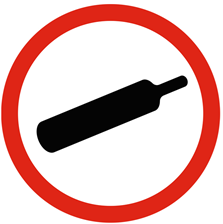
Compressed and liquefied gases can cause a physical hazard due to the pressure contained within them, as well as chemical hazards due to the individual chemicals that they contain.
Corrosive
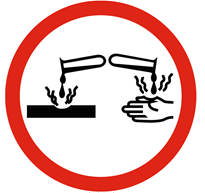
Corrosives may cause damage to skin, eyes, or mucuous membranes, or they can corrode steel or aluminum at arbitrary rates, or they can have pH readings that would indicate that either of these effects would be likely.
Cryogen

Cryogens in laboratories are substances that are stored at a cold-enough temperature so as to potentially cause damage to human tissue. Other hazards can include the hazards of the chemicals that are stored cryogenically such as asphyxiation from displacement of oxygen if temperatures are not maintained.
Explosive
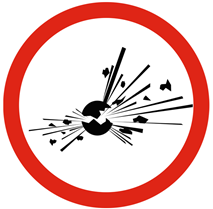
Explosives in this case can be purpose-manufactured explosive agents, or chemicals that may be explosive under certain conditions whether or not their intended application is to impart rapid expansion of gases after initiation.
Flammable
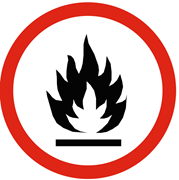
Flammables can be readily ignited. Generally this image is used where chemicals in the laboratory would bear the GHS pictogram for flammables, however some discretion is used to include other materials that would not traditionally bear this pictogram.
Health hazards
Health hazards can be broadly categorized into acute, chronic, and minor hazards. In this case each has its own icon for the purposes of these door signs.
Skull and crossbones
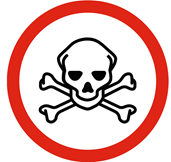
The skull and crossbones graphic is reserved exclusively for laboratories where acutely toxic substances are stored or used. Exposure to these substances could be fatal or result in significant toxic effects to one's body.
Silhouette
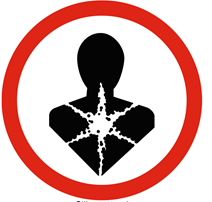
The silhouette graphic is used to represent carcinogenicity, mutagenicity, respiratory sensitization, target organ toxicity, and aspiration toxicity. Generally reproductive toxicity is included, but for the purposes of communicating hazards it has been separated and represented as two different graphics.
Exclamation point

The exclamation point health hazard graphic is used for more mild substances that can include irritants to the skin and eyes, skin sensitization, acute toxicity (harmful), narcotic effects, and respiratory tract irritants.
Magnetic field

Strong magnetic fields can be hazardous for individuals with metal implants in their body, or can present a physical hazard if objects carried, moved, or otherwise introduced to the magnetic field experience resultant movement.
Non-ionizing radiation
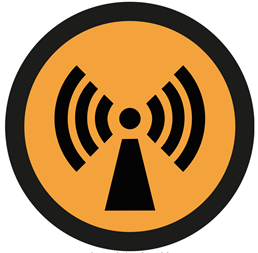
Non-ionizing radiation is dangerous only in cases of significant exposure. Laboratories with this graphic represent areas where exposure to UV radiation, radiofrequency, or microwave radiation could occur, and that such exposure could potentially cause harm to individuals.
Oxidizer
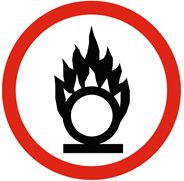
The flame over circle graphic represents locations that contain oxidiers or organic peroxides.
Reproductive toxin
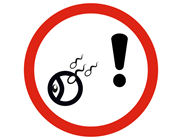
Reproductive toxins generally damage the male or female reproductive tract. This graphic represents areas where substances with the potential to cause temporary or permenant damage to the reproductive organs or capacities of individuals.
Teratogen
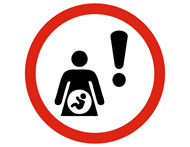
Teratogens can damage the developing fetus, this graphic represents areas where they are used or stored.
Water reactive
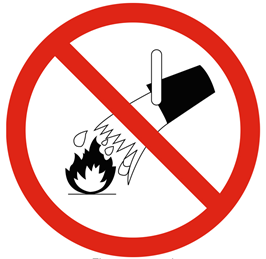
This graphic represents areas where caution must be exercised when responding to fire, flames, or smoke- the area uses or stores materials that react violently with water to release heat, flammable gas, toxic gas, or cause an explosive mixture with air.
Information and Restrictions
Authorized personnel only

All labs are open only to authorized personnel, however these graphics serve as a reminder of this campus-wide policy.
No food or drink beyond this point

In almost every lab, food and drink are prohibited. Generally unless the food or drink is not intended for human consumption, and is the subject of the research taking place, food and drink would not be allowed.
QR code

Scanning this with your phone's QR-code reader will take you to this website to learn more.
Drinking water restriction
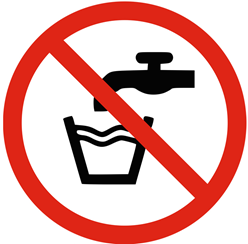
In some areas, the water may not be appropriate for human consumption. While food and drink is prohibited in the laboratories, it is sometimes indicated on doorsigns where the plumbed water is not fit for human consumption.
Food and drink restriction
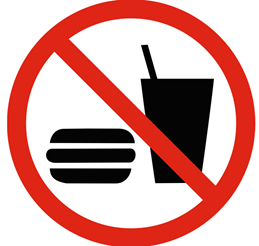
In laboratories where food and drink may be used, or in laboratories where the layout of the laboratory is not conducive to creating a single area where food or drink is prohibited, this graphic may be used to designate that there is no food or drink allowed beyond a certain point.
Smoking restriction
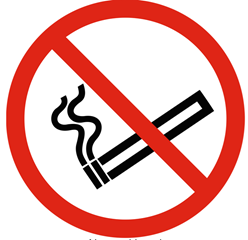
University of Houston is a smoke-free campus. No smoking is allowed in any laboratory, however there are certain locations where there is a regulatory requirements to post no smoking signage, and this graphic aims to accomplish that.
Safety Equipment
Eyewash station
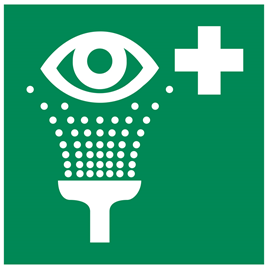
Fire extinguisher
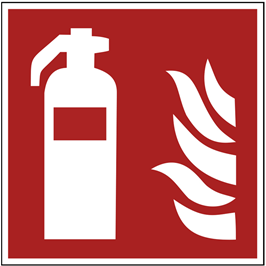
First aid kit
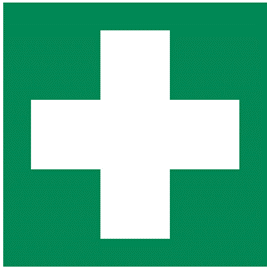
Safety shower
